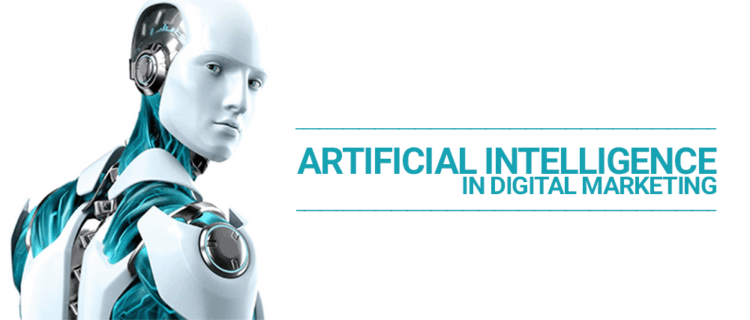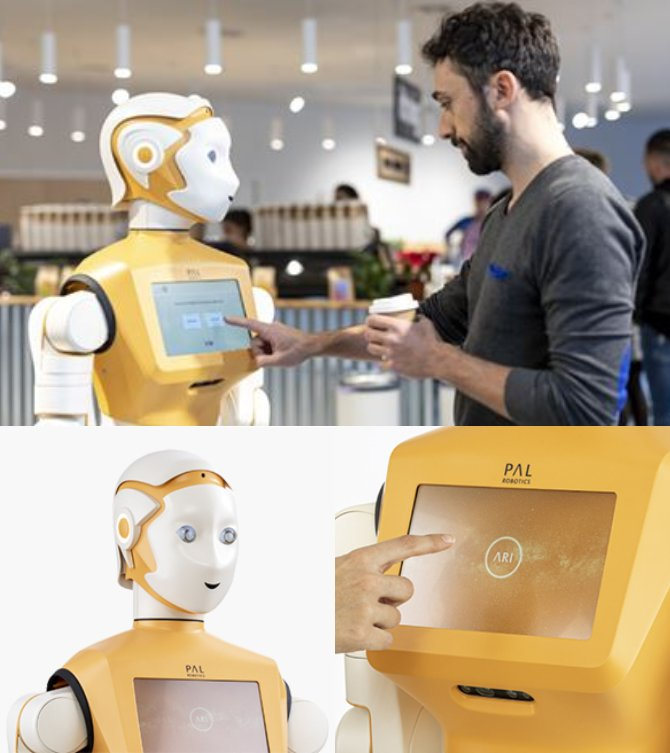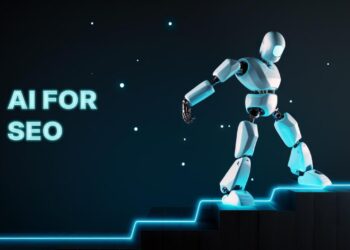In today’s hyper-competitive digital landscape, marketers face an ever-growing challenge: how to engage vast audiences personally, efficiently, and at scale. The answer increasingly lies in marketing automation, a sophisticated set of technologies designed to streamline, execute, and measure marketing tasks and workflows automatically. But the real game-changer isn’t just automation; it’s the integration of Artificial Intelligence (AI), transforming these tools from mere task executors into intelligent engines of growth. AI-powered marketing automation unlocks unprecedented levels of personalization, predictive capabilities, and optimization, enabling campaigns to achieve unparalleled success. It’s no longer just about sending emails; it’s about anticipating customer needs, delivering hyper-relevant content, and optimizing every touchpoint for maximum impact and conversion. This powerful synergy is truly defining the future of campaign success.
The Evolution of Marketing: From Mass to Personalized Engagement
To fully grasp the revolutionary impact of AI-powered marketing automation, we must first understand the journey of marketing itself – a journey from broad, undifferentiated outreach to highly personalized, data-driven engagement.
A. The Era of Mass Marketing
For much of the 20th century, marketing was a one-to-many affair, characterized by broad strokes and limited personalization.
- Print and Broadcast Dominance: Advertisements in newspapers, magazines, radio, and television reached a mass audience. While effective for brand building, these channels offered minimal opportunities for direct interaction or tailored messaging.
- Limited Data Insights: Marketers had scant data on individual customer behavior or preferences. Decisions were often based on broad demographic assumptions and post-campaign surveys, leading to hit-or-miss strategies.
- Manual Processes: Campaigns, even direct mail, involved extensive manual labor for list management, content creation, and distribution. Scaling meant adding more human resources, leading to inefficiencies and errors.
- Slow Feedback Loops: Measuring campaign effectiveness was a protracted process, often relying on sales figures weeks or months later. This made rapid optimization impossible.
B. The Digital Revolution and Early Automation
The internet brought a seismic shift, introducing new channels and the ability to collect unprecedented amounts of customer data. This paved the way for the first wave of marketing automation.
- Email Marketing Emergence: Email became a direct, cost-effective channel. Early automation tools allowed for scheduled sends and basic list segmentation.
- Website Analytics: Tools like Google Analytics provided insights into website traffic, user paths, and conversion rates, moving marketing towards more data-driven decisions.
- CRM Systems: Customer Relationship Management (CRM) platforms began centralizing customer data, offering a single view of interactions.
- Workflow Automation: Early marketing automation platforms introduced concepts like lead nurturing through drip campaigns, automated responses, and basic lead scoring. These were rules-based, meaning marketers had to define every step.
- Limitations of Rules-Based Automation: While a significant improvement, these systems were rigid. They required marketers to anticipate every possible customer path and create a rule for it. They couldn’t adapt dynamically to unexpected customer behavior, nor could they uncover hidden patterns in data.
C. The AI Infusion: The Dawn of Intelligent Automation
The recent explosion in Artificial Intelligence capabilities, particularly in machine learning and natural language processing, has fundamentally transformed marketing automation. AI adds layers of intelligence, adaptability, and predictive power that were previously unimaginable.
- Predictive Analytics: AI can analyze vast datasets to predict future customer behavior, such as churn risk, likelihood to purchase, or optimal time for engagement.
- Hyper-Personalization at Scale: AI moves beyond basic segmentation to personalize content, offers, and even entire customer journeys for individual users, based on their real-time behavior and inferred preferences.
- Dynamic Optimization: AI continuously learns from campaign performance, automatically adjusting elements like send times, subject lines, ad creatives, and audience targeting for maximum effectiveness.
- Generative AI for Content: Emerging generative AI models can assist in creating personalized copy, ad headlines, and even basic visual elements, accelerating content production.
- Conversational AI: Chatbots and virtual assistants powered by AI provide instant, personalized support and guide customers through the sales funnel 24/7.
This integration of AI elevates marketing automation from a productivity tool to a strategic weapon, enabling marketers to engage customers with unprecedented relevance and efficiency.
Core Pillars of AI-Powered Marketing Automation
The power of AI-driven marketing automation stems from its ability to enhance several critical marketing functions, making them smarter, faster, and more effective.
A. Intelligent Lead Management
AI significantly refines how leads are identified, scored, and nurtured, ensuring sales teams focus on the most promising prospects.
- Predictive Lead Scoring: Traditional lead scoring relies on predefined rules (e.g., website visits, email opens). AI-powered scoring uses machine learning algorithms to analyze historical data from converting and non-converting leads, identifying complex patterns and predicting the true likelihood of a lead converting. This provides a more accurate and dynamic score.
- Automated Lead Nurturing Paths: AI can dynamically adjust lead nurturing sequences based on real-time lead behavior. If a lead suddenly shows high engagement with a specific product page, AI can trigger a personalized email sequence or a sales alert, rather than sticking to a rigid, predefined path.
- Churn Prediction and Prevention: AI models can analyze customer data (usage patterns, support interactions, demographics) to predict which customers are at risk of churning. This allows automated campaigns to proactively send retention offers, personalized content, or trigger human intervention before a customer leaves.
- Intelligent Customer Segmentation: Beyond basic demographics, AI can uncover subtle clusters of customers with similar behaviors or preferences, enabling hyper-targeted campaigns that resonate more deeply.
B. Hyper-Personalization at Scale
AI enables a level of one-to-one marketing that was previously impossible, delivering highly relevant experiences to millions of individuals simultaneously.
- Dynamic Content Optimization: AI can automatically select and display the most relevant content (e.g., product recommendations, article suggestions, ad creatives) to each individual user across websites, emails, and ads, based on their Browse history, past purchases, and inferred interests.
- Personalized Product Recommendations: Sophisticated recommendation engines powered by AI analyze user behavior, collaborative filtering, and content similarities to suggest products or services highly likely to appeal to each customer, significantly boosting conversion rates.
- Optimal Send Time Optimization: AI analyzes individual user engagement patterns (e.g., when they typically open emails or interact with notifications) to determine the precise best time to send a message to each recipient, maximizing open rates and click-through rates.
- Personalized Customer Journeys: AI can design and adapt entire customer journeys on the fly. Instead of fixed pathways, the system can dynamically decide the next best action, channel, or message for a customer based on their real-time interactions and likelihood to convert, creating truly adaptive experiences.
C. Automated Content Optimization and Generation
AI is increasingly playing a role in refining and even creating marketing content, pushing the boundaries of efficiency and relevance.
- A/B Testing and Multivariate Optimization: While traditional automation supports A/B testing, AI takes it further with multivariate testing, analyzing numerous combinations of headlines, images, call-to-actions, and body copy across different segments, identifying optimal permutations far more quickly and effectively than manual methods.
- Natural Language Generation (NLG) for Copy: AI can generate personalized email subject lines, ad copy, product descriptions, and even basic blog posts based on specific data inputs and audience profiles, accelerating content creation and ensuring relevance.
- Sentiment Analysis for Engagement: AI-powered sentiment analysis can monitor customer feedback (e.g., social media comments, review sites) to gauge sentiment towards a brand or campaign, allowing automated systems to respond appropriately or flag issues for human intervention.
- Image/Video Optimization: AI can select the most impactful images or even generate variations for ad campaigns based on predicted audience response, enhancing visual appeal and engagement.
D. Cross-Channel Orchestration and Attribution
AI helps marketers create seamless, unified customer experiences across multiple channels and accurately attribute success.
- Unified Customer Profiles: AI-powered platforms can consolidate data from all customer touchpoints (website, email, social media, CRM, offline interactions) to create a single, comprehensive, and dynamically updated customer profile, providing a holistic view.
- Intelligent Channel Selection: AI can determine the optimal channel (email, SMS, push notification, in-app message, social ad) for delivering a specific message to a specific customer at a specific time, maximizing reach and engagement based on historical preferences.
- Multi-Touch Attribution: Moving beyond last-click attribution, AI can analyze complex customer journeys with multiple touchpoints, assigning appropriate credit to each channel and interaction, providing a more accurate understanding of ROI across the marketing mix.
- Budget Optimization: AI can recommend optimal budget allocation across different marketing channels and campaigns based on predicted performance and ROI, ensuring marketing spend is maximized for desired outcomes.
Transformative Advantages of AI-Powered Marketing Automation
The synergistic combination of AI and marketing automation unlocks a host of powerful benefits that fundamentally redefine how businesses engage with their markets and customers.
A. Unprecedented Efficiency and Productivity
AI automation drastically reduces the manual effort involved in complex marketing tasks, leading to significant boosts in efficiency.
- Task Automation: Routine, repetitive tasks like email scheduling, data segmentation, lead nurturing, and report generation are automated, freeing up marketing teams from tedious work.
- Resource Optimization: Marketers can achieve more with existing resources. Instead of hiring more staff for manual tasks, they can reallocate talent to strategic thinking, creative development, and relationship building.
- Faster Campaign Deployment: Automated workflows and AI-assisted content creation accelerate the time it takes to launch new campaigns and iterate on existing ones, improving agility.
- Error Reduction: Automated systems, especially when driven by AI, are less prone to human error, ensuring consistency and accuracy in campaign execution.
B. Hyper-Personalization at True Scale
This is perhaps the most significant advantage. AI allows marketers to deliver a truly personalized experience to every individual customer, even across millions of interactions.
- Increased Engagement and Conversions: Highly relevant content and offers resonate more deeply with customers, leading to significantly higher open rates, click-through rates, and conversion rates.
- Improved Customer Satisfaction and Loyalty: Customers feel understood and valued when they receive tailored communications, fostering stronger relationships and long-term loyalty.
- Reduced Message Fatigue: By sending only relevant messages at the optimal time, AI helps prevent message overload and fatigue, preserving customer interest and reducing opt-out rates.
- Enhanced Customer Lifetime Value (CLTV): By nurturing relationships through personalized experiences, AI-powered automation contributes to higher retention rates and increased customer spending over time.
C. Superior Data-Driven Decision Making
AI extracts actionable insights from vast datasets, empowering marketers to make more informed and strategic decisions.
- Predictive Insights: AI analyzes patterns to predict future customer behavior (e.g., purchase intent, churn risk), market trends, and campaign performance, allowing for proactive adjustments.
- Optimal Strategy Identification: AI can identify which campaign elements, channels, and timing combinations are most effective for different audience segments, providing data-backed recommendations for strategy optimization.
- Real-time Optimization: AI models continuously learn from live campaign data, allowing for dynamic, real-time adjustments to campaign parameters without manual intervention, maximizing ROI.
- Comprehensive Attribution: AI’s ability to model multi-touch attribution provides a far more accurate understanding of marketing ROI across complex customer journeys, enabling better budget allocation.
D. Enhanced Customer Experience (CX)
AI-powered marketing automation contributes significantly to a seamless and satisfying customer experience.
- Consistent Brand Voice: Automated interactions maintain a consistent brand voice and messaging across all touchpoints.
- Faster Response Times: Conversational AI (chatbots) can provide instant answers to customer queries 24/7, improving satisfaction.
- Relevant Support: By understanding customer history and context, automated systems can route complex queries to the most appropriate human agents, providing more efficient support.
- Proactive Engagement: Predicting needs allows for proactive outreach (e.g., product usage tips, replenishment reminders), demonstrating that the brand understands and cares about the customer.
E. Competitive Edge and Market Responsiveness
Adopting AI-powered marketing automation provides a distinct competitive advantage in a crowded marketplace.
- Agility: The ability to launch, optimize, and iterate campaigns faster allows businesses to respond more quickly to market changes, competitor actions, and emerging trends.
- Innovation: Freeing up human marketers from manual tasks allows them to focus on higher-level strategy, creative ideation, and exploring new growth opportunities.
- Superior ROI: By optimizing spend, increasing conversions, and enhancing customer lifetime value, AI-powered automation demonstrably improves the return on marketing investment.
- Scalability of Growth: As businesses grow, AI-powered systems can scale effortlessly to handle increasing volumes of leads and customers without a proportional increase in manual effort or costs.
Challenges and Considerations in Adopting AI-Powered Marketing Automation
While the benefits are compelling, the journey to fully leverage AI in marketing automation is not without its hurdles. Organizations must be prepared to address several key challenges.
A. Data Quality, Volume, and Integration
AI models are only as good as the data they are trained on. This presents a multi-faceted challenge:
- Data Silos: Many organizations suffer from fragmented customer data stored in disparate systems (CRM, ERP, website analytics, social media tools) that don’t communicate. Integrating these silos into a unified customer profile for AI analysis is complex and often requires significant ETL (Extract, Transform, Load) efforts.
- Data Quality: Inaccurate, incomplete, or inconsistent data will lead to flawed AI insights and ineffective personalization. Cleaning, validating, and maintaining high-quality data is a continuous and resource-intensive process.
- Data Volume and Velocity: AI requires vast amounts of data to learn effectively. Managing the sheer volume and velocity of real-time customer data streams (especially from omni-channel interactions) demands robust data infrastructure.
- Privacy and Compliance: Collecting and using customer data, particularly sensitive personal information, requires strict adherence to data privacy regulations (e.g., GDPR, CCPA). Designing AI systems that are compliant by design is critical.
B. Skill Gap and Talent Acquisition
The successful implementation and ongoing management of AI-powered marketing automation require a new blend of skills that many marketing teams currently lack.
- Data Science/Analytics Skills: Understanding how to interpret AI model outputs, identify biases, and iterate on strategies requires strong analytical and data science capabilities.
- AI/ML Literacy: Marketers need a foundational understanding of AI concepts to effectively use and troubleshoot AI-powered tools.
- Technical Integration Skills: Connecting disparate systems, managing APIs, and configuring complex automation workflows often requires technical expertise beyond traditional marketing roles.
- Change Management: Introducing AI will change existing workflows and roles, necessitating effective change management strategies to ensure adoption and minimize resistance from the existing workforce.
C. Ethical AI and Bias Management
AI models can inadvertently perpetuate or even amplify existing biases present in the training data, leading to unintended and potentially harmful outcomes.
- Algorithmic Bias: If historical marketing data reflects past biases (e.g., targeting certain demographics more than others), an AI model might learn and reinforce those biases, leading to discriminatory or ineffective campaigns.
- Transparency and Explainability: Understanding why an AI model made a particular recommendation (e.g., why it scored a lead high or low) can be challenging (‘black box’ problem). This lack of transparency can hinder trust and effective optimization.
- Customer Perception: Overly aggressive or “creepy” personalization can alienate customers. Marketers must strike a balance between relevance and privacy, ensuring AI-driven interactions feel helpful, not intrusive.
- Fairness and Accountability: Ensuring AI systems operate fairly across all customer segments and establishing clear lines of accountability for AI-driven decisions are crucial ethical considerations.
D. Integration Complexity and Vendor Lock-in
The marketing technology (MarTech) landscape is vast and fragmented. Integrating AI-powered automation platforms with existing CRM, ERP, e-commerce, and content management systems can be complex.
- API Challenges: Ensuring seamless data flow between platforms often relies on robust APIs, which can vary in quality and capabilities across vendors.
- Platform Sprawl: Organizations might end up with too many disparate tools, leading to increased complexity and management overhead.
- Vendor Lock-in: Investing heavily in one vendor’s AI capabilities can make it difficult and costly to switch platforms later, limiting flexibility.
- Customization vs. Out-of-the-Box: Balancing the need for custom AI models tailored to unique business needs versus leveraging off-the-shelf AI features offered by automation platforms.
E. Over-Reliance on Automation and Loss of Human Touch
While automation boosts efficiency, an over-reliance on AI without human oversight can lead to a dehumanized customer experience or missed opportunities.
- Loss of Creativity: Focusing too much on AI optimization might stifle human creativity and intuition in marketing strategy.
- Generic Interactions: If not carefully managed, personalized messages can still feel generic or robotic if they lack genuine human empathy or context.
- Critical Oversight: Marketers must retain critical oversight, continuously monitoring AI performance, and stepping in for complex customer interactions that require nuanced human judgment.
- Ethical Boundary Blurring: AI’s ability to influence behavior raises ethical questions about manipulation if not used responsibly.
Best Practices for Implementing AI-Powered Marketing Automation
To successfully navigate the complexities and fully leverage the power of AI in marketing automation, organizations should adhere to a set of strategic best practices.
A. Start with a Clear Strategy, Not Just Technology
Before investing in any tool, define clear business objectives. What specific pain points are you trying to solve (e.g., low lead conversion, high churn, inefficient content creation)? Identify high-impact use cases where AI can provide a clear ROI. Start small with a pilot project, prove its value, and then scale up. A technology-first approach without a clear strategy often leads to failed implementations.
B. Prioritize Data Quality, Integration, and Governance
AI lives and dies by data. Make data a top priority:
- Unify Data Sources: Invest in a Customer Data Platform (CDP) or data integration solutions to break down silos and create a single, comprehensive view of your customers.
- Ensure Data Quality: Implement robust data validation, cleansing, and enrichment processes. Garbage in, garbage out applies strongly to AI.
- Establish Data Governance: Define clear policies for data collection, storage, access, usage, and retention, ensuring compliance with privacy regulations (GDPR, CCPA) from the outset.
- Leverage First-Party Data: Prioritize collecting and utilizing your own first-party data, as it is the most valuable and privacy-compliant for AI personalization.
C. Foster an AI-Literate Marketing Team
Invest heavily in upskilling your marketing team. Provide training on:
- AI Fundamentals: How AI works, its capabilities, and its limitations.
- Data Analytics: How to interpret AI-generated insights, dashboards, and reports.
- Prompt Engineering (for Generative AI): How to effectively communicate with generative AI tools to get desired content.
- Ethical AI Principles: Understanding bias, fairness, and responsible AI usage. Encourage a culture of continuous learning and experimentation with AI tools. Consider hiring roles with a blend of marketing and data science expertise.
D. Adopt an Iterative and Test-Driven Approach
AI-powered marketing automation is not a set-it-and-forget-it solution. Embrace an iterative and test-driven methodology:
- Continuous Experimentation: Constantly A/B test and multivariate test different campaign elements (subject lines, CTAs, visuals, messaging sequences) to identify what resonates best.
- Monitor AI Performance: Continuously monitor the performance of your AI models (e.g., lead scoring accuracy, prediction effectiveness).
- Refine and Optimize: Use insights from testing and monitoring to fine-tune AI algorithms, update content, and optimize workflows. AI models need ongoing training and adjustment.
- Start Small: Begin with automating specific, well-defined tasks or segments before attempting to automate entire, complex customer journeys.
E. Maintain a Human-in-the-Loop Philosophy
While AI provides incredible power, human judgment, creativity, and empathy remain indispensable. Adopt a ‘human-in-the-loop’ philosophy:
- Strategic Oversight: Marketers should focus on high-level strategy, creative direction, and brand storytelling, leveraging AI for execution and optimization.
- Ethical Review: Human teams must continuously review AI outputs for bias, tone, and brand alignment.
- Complex Interactions: Reserve complex, sensitive, or high-value customer interactions for human agents who can provide nuanced responses and build deeper relationships.
- Interpret and Adapt: Use AI-generated insights to inform and inspire human creativity, not replace it entirely.
F. Secure Your AI-Powered Ecosystem
Given the sensitive customer data involved, robust cybersecurity is paramount.
- Secure Data Pipelines: Ensure data ingestion, storage, and processing for AI are encrypted and secured.
- Access Control: Implement strong Identity and Access Management (IAM) to control who can access and configure AI models and marketing automation platforms.
- Vendor Security: Vet the security practices of your chosen marketing automation and AI platform vendors thoroughly.
- Compliance: Design your systems to be compliant with all relevant data privacy and security regulations (e.g., GDPR, HIPAA, CCPA).
G. Focus on Customer Experience, Not Just Automation
The ultimate goal is to improve the customer experience, not just automate tasks. Every AI-powered automation should aim to make interactions more valuable, relevant, and seamless for the customer. Think about their journey, their pain points, and how AI can genuinely add value, rather than just pushing messages.
The Future Trajectory of AI-Powered Marketing Automation
The integration of AI into marketing automation is still in its nascent stages, but its trajectory promises to reshape the industry in profound ways. Several exciting trends are on the horizon.
A. Hyper-Personalization Beyond Segmentation
The future will see personalization moving beyond even sophisticated segmentation to true one-to-one adaptive experiences. AI will dynamically generate not just content but entire interaction flows, real-time pricing, and product configurations based on an individual’s micro-moments and predicted needs. This moves towards a truly bespoke customer journey for every user, on every channel, in real-time.
B. Generative AI for End-to-End Content Creation
Generative AI, exemplified by large language models (LLMs) and diffusion models, will increasingly automate and enhance content creation.
- Automated Campaign Creation: AI will be able to generate full campaign briefs, write ad copy, craft email sequences, and even suggest visual elements based on performance data and target audience profiles.
- Personalized Content at Scale: AI will be capable of generating unique, highly personalized content variants for individual users on the fly, making mass customization effortless.
- Multi-Modal Content Generation: Beyond text, AI will generate personalized images, short videos, and audio snippets tailored to individual preferences, creating richer, more engaging experiences.
C. Conversational AI as the Primary Interface
Conversational AI (chatbots and voice assistants) will evolve to become the primary interface for many customer interactions, moving beyond simple FAQs.
- Proactive Engagement: AI assistants will proactively initiate conversations based on predicted customer needs or behavior.
- Complex Query Resolution: They will handle more complex queries, resolve issues, and even guide customers through multi-step purchase processes.
- Emotional Intelligence: Future AI will incorporate more advanced emotional intelligence, adapting tone and response based on customer sentiment and emotional state, providing more empathetic interactions.
D. AI for Predictive and Prescriptive Marketing Strategy
AI will move beyond optimizing individual campaigns to informing and even suggesting overarching marketing strategies.
- Market Trend Prediction: AI will analyze vast amounts of external data (economic indicators, social trends, competitor activities) to predict emerging market opportunities or threats.
- Customer Value Optimization: AI will focus on maximizing Customer Lifetime Value (CLTV) by recommending optimal long-term customer engagement strategies, not just short-term conversions.
- Proactive Campaign Ideation: AI will analyze gaps in the market or underserved customer segments and suggest entirely new campaign ideas or product features.
- Holistic ROI Optimization: AI will optimize marketing spend across the entire marketing mix, factoring in brand building, customer retention, and acquisition costs, for the highest possible holistic return on investment.
E. Enhanced Ethical AI and Transparency Tools
As AI becomes more pervasive, there will be an intensified focus on ethical AI development and governance.
- Explainable AI (XAI): Tools will emerge to make AI decision-making more transparent and explainable, allowing marketers to understand why an AI model made certain predictions or recommendations.
- Bias Detection and Mitigation: More sophisticated tools will be developed to automatically detect and mitigate biases in training data and AI model outputs, ensuring fairness and equity in marketing efforts.
- Privacy-Enhancing AI: Innovations in privacy-preserving AI (e.g., federated learning, differential privacy) will allow AI models to learn from customer data while rigorously protecting individual privacy, building greater customer trust.
F. Integration with Immersive Technologies (Metaverse, AR/VR)
The rise of immersive technologies will open new frontiers for AI-powered marketing automation.
- Personalized Metaverse Experiences: AI will drive personalized experiences within virtual worlds, tailoring avatars, environments, and interactions based on user preferences.
- AR-Powered Shopping: AI will integrate with Augmented Reality (AR) tools to provide highly personalized virtual try-ons, product visualizations, and interactive shopping experiences in real-world environments.
- AI-Driven Virtual Influencers: More realistic and interactive AI-powered virtual influencers will become powerful marketing channels, capable of hyper-personalized engagement.
Conclusion
The evolution of marketing from broad brushstrokes to surgical precision has found its ultimate accelerator in the synergy of marketing automation and Artificial Intelligence. AI-powered campaign success is no longer a futuristic concept but a present-day imperative for businesses aiming to thrive in the digital economy. By leveraging AI’s capabilities for predictive analytics, hyper-personalization, dynamic optimization, and intelligent content generation, marketers can transcend the limitations of manual processes and rules-based automation.
While the journey involves navigating challenges related to data quality, skill gaps, ethical considerations, and integration complexities, the profound benefits are undeniable: unprecedented efficiency, superior customer experiences, enhanced ROI, and a significant competitive edge. Organizations that prioritize a strategic, data-driven, and human-centric approach to implementing AI-powered marketing automation will not only streamline their operations but also forge deeper, more meaningful connections with their audiences. This powerful fusion is truly defining the next chapter of marketing, making every interaction count and ensuring sustained campaign success in an increasingly intelligent world.











